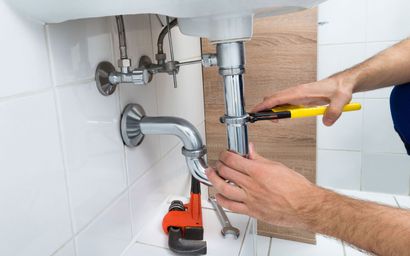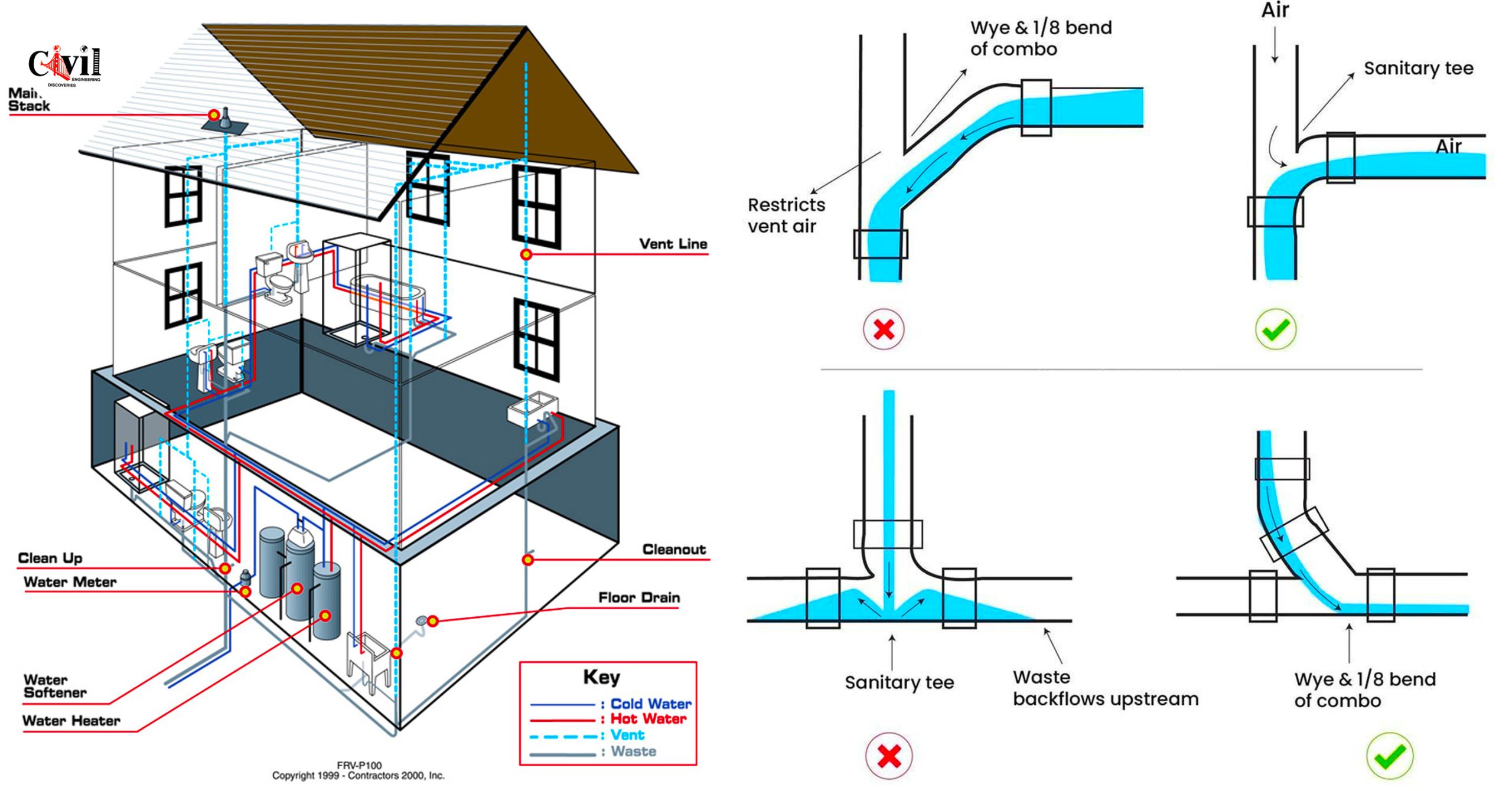On this page on the next paragraphs you can find more great information regarding Exploring Your Homes Plumbing Anatomy.

Comprehending exactly how your home's pipes system functions is necessary for every single house owner. From providing clean water for alcohol consumption, food preparation, and showering to securely removing wastewater, a well-maintained pipes system is important for your family members's health and wellness and comfort. In this extensive overview, we'll discover the intricate network that makes up your home's plumbing and deal tips on upkeep, upgrades, and taking care of typical concerns.
Introduction
Your home's pipes system is more than simply a network of pipes; it's a complex system that guarantees you have access to clean water and reliable wastewater removal. Knowing its components and exactly how they interact can assist you prevent expensive repairs and make sure whatever runs smoothly.
Basic Elements of a Plumbing System
Pipes and Tubes
At the heart of your plumbing system are the pipes and tubing that lug water throughout your home. These can be made of various materials such as copper, PVC, or PEX, each with its advantages in terms of resilience and cost-effectiveness.
Components: Sinks, Toilets, Showers, etc.
Fixtures like sinks, bathrooms, showers, and bath tubs are where water is used in your house. Recognizing how these components link to the pipes system aids in diagnosing issues and planning upgrades.
Shutoffs and Shut-off Factors
Valves regulate the flow of water in your plumbing system. Shut-off valves are vital during emergency situations or when you need to make fixings, allowing you to separate parts of the system without interrupting water flow to the entire house.
Supply Of Water System
Main Water Line
The main water line connects your home to the municipal water or a private well. It's where water enters your home and is dispersed to different fixtures.
Water Meter and Stress Regulator
The water meter measures your water use, while a pressure regulator makes sure that water moves at a risk-free pressure throughout your home's pipes system, preventing damage to pipes and fixtures.
Cold Water vs. Hot Water Lines
Recognizing the difference between cold water lines, which supply water directly from the primary, and hot water lines, which carry warmed water from the water heater, helps in fixing and planning for upgrades.
Water drainage System
Drain Pipes Pipes and Traps
Drain pipes lug wastewater away from sinks, showers, and bathrooms to the sewage system or sewage-disposal tank. Traps avoid drain gases from entering your home and likewise trap particles that can cause blockages.
Ventilation Pipelines
Air flow pipelines permit air into the drain system, protecting against suction that can slow down drain and cause catches to vacant. Correct ventilation is necessary for maintaining the integrity of your plumbing system.
Significance of Appropriate Drain
Guaranteeing correct drainage prevents backups and water damage. Routinely cleaning up drains and maintaining traps can avoid pricey repair work and expand the life of your pipes system.
Water Heating Unit
Kinds Of Hot Water Heater
Water heaters can be tankless or standard tank-style. Tankless heaters warm water as needed, while tanks keep warmed water for immediate use.
Updating Your Pipes System
Reasons for Upgrading
Updating to water-efficient fixtures or replacing old pipelines can boost water quality, minimize water costs, and enhance the worth of your home.
Modern Pipes Technologies and Their Benefits
Explore innovations like clever leakage detectors, water-saving toilets, and energy-efficient hot water heater that can conserve money and decrease ecological impact.
Cost Considerations and ROI
Compute the upfront expenses versus long-lasting financial savings when considering plumbing upgrades. Numerous upgrades spend for themselves through decreased energy bills and fewer repair work.
Exactly How Water Heaters Link to the Pipes System
Comprehending just how hot water heater attach to both the cold water supply and hot water distribution lines helps in identifying concerns like insufficient hot water or leaks.
Maintenance Tips for Water Heaters
Frequently flushing your hot water heater to get rid of sediment, checking the temperature level setups, and inspecting for leaks can extend its life expectancy and improve power efficiency.
Typical Pipes Issues
Leaks and Their Causes
Leakages can take place because of aging pipelines, loosened installations, or high water pressure. Resolving leakages quickly prevents water damages and mold and mildew development.
Clogs and Clogs
Blockages in drains pipes and toilets are typically triggered by flushing non-flushable things or an accumulation of grease and hair. Using drainpipe displays and bearing in mind what decreases your drains can protect against blockages.
Indications of Plumbing Issues to Watch For
Low water pressure, sluggish drains, foul odors, or abnormally high water expenses are signs of possible plumbing troubles that must be dealt with promptly.
Pipes Maintenance Tips
Regular Examinations and Checks
Set up yearly plumbing examinations to catch concerns early. Try to find signs of leakages, rust, or mineral buildup in taps and showerheads.
DIY Maintenance Tasks
Basic tasks like cleansing faucet aerators, checking for bathroom leaks utilizing dye tablet computers, or insulating revealed pipelines in cold environments can stop major pipes issues.
When to Call a Specialist Plumbing Technician
Know when a pipes problem calls for professional proficiency. Attempting intricate repairs without appropriate expertise can cause even more damage and greater repair work costs.
Tips for Lowering Water Usage
Basic routines like repairing leakages quickly, taking much shorter showers, and running full lots of washing and dishes can save water and reduced your utility expenses.
Eco-Friendly Pipes Options
Consider lasting plumbing products like bamboo for flooring, which is durable and eco-friendly, or recycled glass for kitchen counters.
Emergency situation Preparedness
Actions to Take During a Plumbing Emergency situation
Know where your shut-off valves lie and how to shut off the water system in case of a burst pipe or major leakage.
Importance of Having Emergency Get In Touches With Convenient
Keep call details for neighborhood plumbing technicians or emergency services conveniently offered for quick feedback throughout a pipes situation.
Environmental Effect and Conservation
Water-Saving Components and Home Appliances
Mounting low-flow taps, showerheads, and toilets can considerably lower water use without sacrificing performance.
DIY Emergency Fixes (When Appropriate).
Momentary repairs like using duct tape to patch a leaking pipe or placing a container under a leaking tap can lessen damages till a professional plumbing gets here.
Verdict.
Recognizing the anatomy of your home's pipes system empowers you to preserve it efficiently, saving time and money on repairs. By adhering to normal maintenance regimens and remaining notified about modern pipes modern technologies, you can guarantee your pipes system runs effectively for years to come.
Understanding Your Home Plumbing System: A Comprehensive Guide
Plumbing System: The Lifeline of Your Home
At its core, the plumbing system is designed to perform two primary functions: bring fresh water into your home and remove wastewater. The system is a network of pipes, fixtures, and other components that transport water and sewage. Residential plumbing systems include potable water supply lines, drain-waste-vent (DWV) systems, and various plumbing fixtures that make water use in daily tasks possible.
Key Components:
Water Supply: This part of your plumbing system brings municipal water into your home, passing through the main water supply line. It s responsible for supplying all water needs, from drinking to bathing.
Drainage System: It carries waste and water away from your home to the sewer or septic system. This system includes all the piping within your home that leads to external sewage or septic systems.
Vent System: An essential yet often overlooked component, the vent system allows sewer gases to escape and lets air into the drainpipes, ensuring water and waste move correctly through the system.
Fixture: More Than Just Taps and Toilets
Plumbing fixtures are the most interactive parts of the plumbing system, including faucets, showers, toilets, and sinks. Each fixture is connected to the plumbing system and plays a role in either the delivery of freshwater or the disposal of waste and wastewater.
Types of Fixtures:
Faucets and Sinks: Used for washing hands, dishes, and other daily water needs. Toilets: Dispose of human waste through the sewage system. Bathtubs and Showers: Provide bathing facilities, requiring both hot and cold water supply. Water Supply: The Source of Life
The water supply system is a critical component, ensuring that potable water is available throughout your home for various uses, including drinking, cooking, and cleaning. This system consists of pipes that distribute water to different parts of the house, controlled by valves to regulate the water flow.
Types of Plumbing: Materials and Methods
Various types of plumbing systems and materials are used in residential settings, each with its advantages and applications. From copper and PVC pipes for water supply to cast iron and ABS for drainage, the choice of materials can impact the longevity and efficiency of your plumbing system.
https://intownplumbingtx.com/articles/home-plumbing-system-guide/

I was guided to that article on Plumbing Installation 101: All You Need to Know from an acquaintance on our other web property. Are you aware of somebody else who is interested in ? Please feel free to share it. Thank-you for taking the time to read it.
Click Here